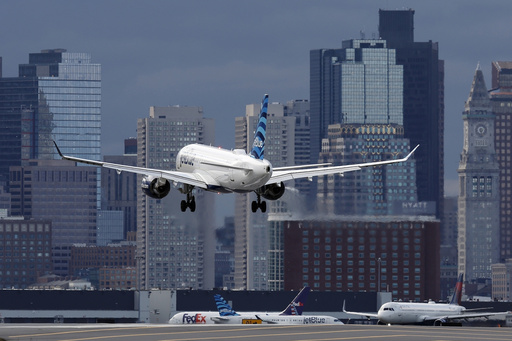The Biden administration spelled out guidelines Tuesday for tax breaks designed to boost production of sustainable aviation fuel and help curb fast-growing emissions from commercial airplanes.
The Treasury Department actions would clear the way for tax credits for corn-based ethanol if producers follow “climate-smart agriculture practices,” including using certain fertilizers and farming methods.
The announcement was praised by the ethanol industry but got a much cooler reaction from environmentalists.
To qualify, sustainable aviation fuel, or SAF, must cut greenhouse-gas emissions by at least half compared with conventional jet fuel made from oil. Congress approved the credits — from $1.25 to $1.75 per gallon — as part of Biden’s huge 2022 climate and health care bill.
Administration officials said commercial aviation — that is mostly passenger and cargo airlines — accounts for 10% of all fuel consumed by transportation and 2% of U.S. carbon emissions.
The Renewable Fuels Association, a trade group for the ethanol industry, said the Treasury guidelines “begin to unlock the door for U.S. ethanol producers and farmers to participate in the emerging market for sustainable aviation fuels.”
The trade group, however, was disappointed that producers will have to follow certain agricultural practices to claim the tax credit.
Skeptics worry that a large share of the tax credits will go to ethanol and other biofuels instead of emerging cleaner fuels.
“The science matters and we are concerned this decision may have missed the mark, but we are carefully reviewing the details before reaching any final conclusions,” said Mark Brownstein, a senior vice president for the Environmental Defense Fund.
While aviation’s share of carbon emissions is small, it is growing faster than any other industry because the technology of powering planes by electricity is far behind the adoption of electric vehicles on the ground.
In 2021, President Joe Biden set a goal set a goal of reducing aviation emissions 20% by 2030 as a step toward “net-zero emissions” by 2050. Those targets are seen as highly ambitious — and maybe unrealistic.
Major airlines have invested in SAF, and its use has grown rapidly in the last few years. Still, it accounted for just 15.8 million gallons in 2022 — or less than 0.1% of all the fuel burned by major U.S. airlines. The White House wants production of 3 billion gallons a year by 2030.
This website uses cookies so that we can provide you with the best user experience possible. Cookie information is stored in your browser and performs functions such as recognising you when you return to our website and helping our team to understand which sections of the website you find most interesting and useful.
